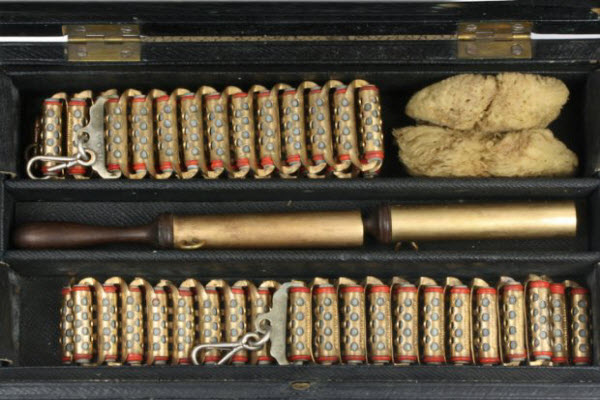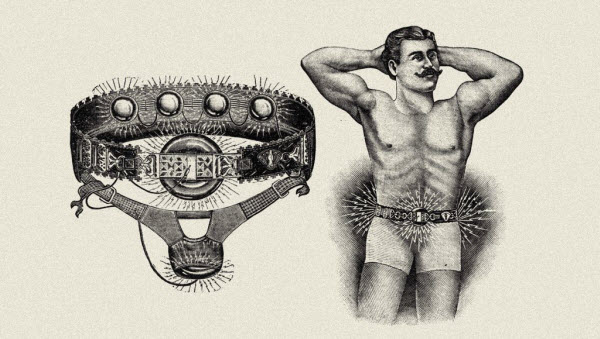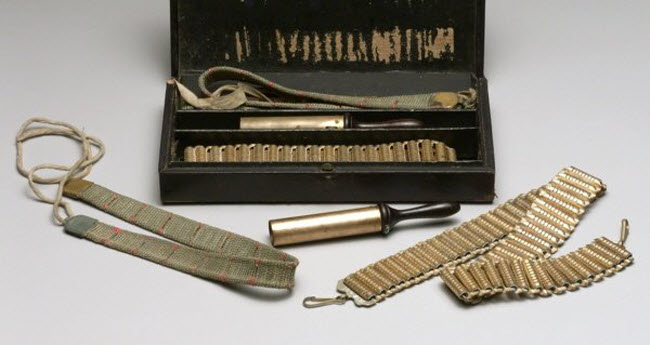Electricity stands as one of humanity’s greatest discoveries, marking a transformative leap in civilization. While its benefits are undeniable, electricity also harbors significant dangers, particularly when experienced directly. Such exposure can result in severe shocks, occasionally leading to fatal outcomes. Over time, as our understanding of this powerful force deepened, humanity learned to harness electricity safely and effectively. This evolution in knowledge contrasts sharply with earlier perceptions, where electricity was often regarded as a magical force capable of miraculous cures. This view persisted until the mid-19th century, when the Austrian scientist Isaac Pulvermacher invented the electric shock belt—a device designed to treat various ailments with electrical currents.
In the mid-19th century, the electric shock belt made its debut at the Great Exhibition in London, UK, in 1851. This invention, which consisted of a series of batteries and electrodes, sent an electric current through the wearer’s body and was touted as a remedy for numerous conditions, including migraines, anxiety, depression, indigestion, constipation, gout, and even low self-esteem. Pulvermacher’s most famous model was known as the “Pulvermacher Galvanic Chain Belt,” though other versions emerged under names like “Edison,” “Owen,” and “Heidelberg” after patent rights were secured.

Constructed from copper, zinc, wood, and leather, the belt came with a 32-page instruction manual and testimonials from satisfied users. Weighing approximately one kilogram, it featured a series of batteries worn around problem areas such as the head, feet, or abdomen. The belt promised to help users overcome chronic neurological diseases, regardless of their cause. The device claimed to penetrate every nerve in the body with a current of 80 amperes, making it the most powerful electric shock belt of its time. Initially, it received enthusiastic support, including endorsements from physicians working for Queen Victoria. It was even rumored that writer Charles Dickens used the device for treating rheumatism in his leg, although this alleged treatment was never documented.
Despite Pulvermacher’s fame as the inventor, the use of electrical therapy predates him. Historical records show that as early as 48 BCE, Scribonius Largus, physician to the Roman Emperor Claudius, utilized electric discharge from torpedo fish—also known as electric rays—to treat conditions ranging from migraines to gout and hemorrhoids. By the 18th century, scientists such as Italian physicist Giovanni Aldini and American Benjamin Franklin had conducted experiments using electrical currents to treat mental illnesses like depression. The advent of chemical batteries brought significant advances in the safe application of electricity for medical treatment, helping to prevent unfortunate incidents such as the one involving Robert Roach, who used a homemade electric device to treat his 16-year-old son for seizures. The experiment ended with the boy’s shirt catching fire. With the rise of mail-order catalogs in the late 19th century, which made it relatively easy for people worldwide to purchase various items, Pulvermacher’s invention arrived at just the right moment, enjoying several years of success.

However, over time, the popularity of the electric shock belt waned as it became evident that the device was more of a gimmick than a genuine medical breakthrough. The belts became associated with quacks who capitalized on the device’s fleeting fame, leading the medical community to reject the electric shock belt entirely. Pulvermacher himself found himself embroiled in a somewhat embarrassing legal battle when he attempted to sue a customer for failing to pay for the belt. The customer, named Moat and residing in Oxford, had initially agreed to pay in installments. After experiencing severe headaches and no improvement in his condition, Moat returned the belt, demanding a refund and compensation.
Today, while the flashy tools and exaggerated claims of the electric shock belt are no longer present, electrical therapy remains a trusted method for treating pain and inflammation. Modern techniques, although far removed from the ornate devices of Pulvermacher’s era, continue to build upon the principles of electrical treatment that were pioneered by this controversial invention.
